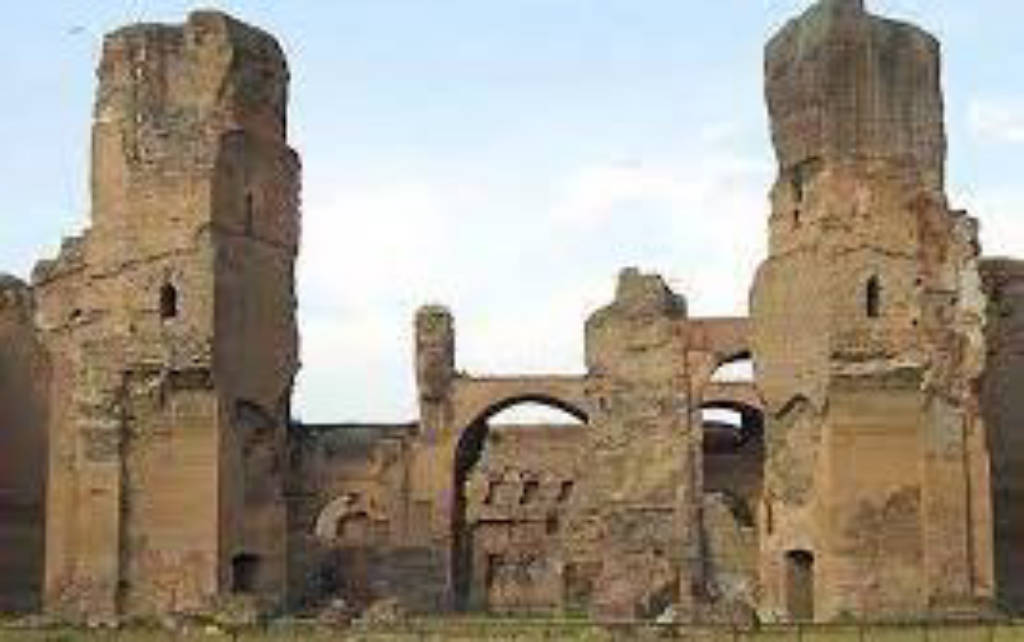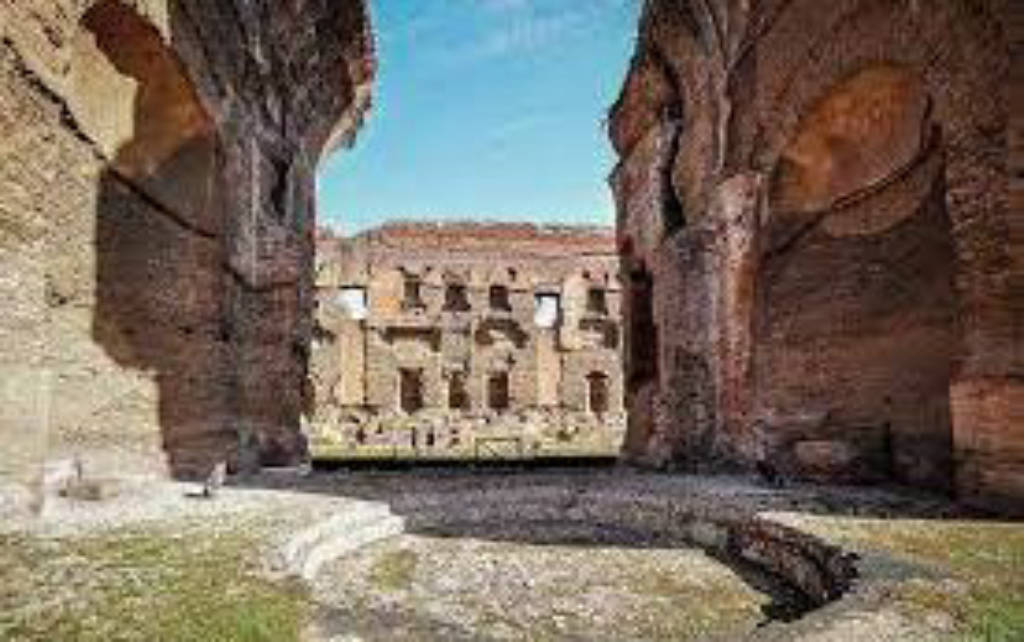The Baths of Caracalla, or Terme di Caracalla in Italian, is an ancient Roman bath complex located in Rome, Italy. Built during the reign of Emperor Caracalla in the early 3rd century AD, these baths are one of the largest and best-preserved examples of imperial Roman public baths.
Constructed between AD 212 and 216, the Baths of Caracalla were an extravagant complex that could accommodate thousands of bathers at once. The site covered approximately 25 hectares and included not only bathing facilities but also a gymnasium, libraries, gardens, and various recreational areas. The baths were a luxurious public space where Roman citizens could engage in bathing, exercise, and socializing.
The central building of the Baths of Caracalla, the frigidarium (cold room), featured an enormous vaulted hall with a large pool for cold baths. The complex also had a tepidarium (warm room) and a caldarium (hot room) with pools of varying temperatures. The vast and intricately decorated complex demonstrated the grandeur of Roman engineering and architecture during the height of the Roman Empire.
While the Baths of Caracalla fell into disuse and disrepair over the centuries, much of the structure's ruins still stand today, providing visitors with a glimpse into the opulence of ancient Roman public life. The site is known for its well-preserved mosaics, grand hallways, and the imposing remains of its once-magnificent architecture.
Today, the Baths of Caracalla are a popular archaeological site and a testament to the advanced engineering and cultural sophistication of ancient Rome. Visitors can explore the extensive ruins and imagine the vibrant social and cultural activities that took place within this monumental complex.
 Register
RegisterSign in Travel Agent
Sign in Supplier
Sign in Affiliate
Sign in Guru





 Viale delle Terme di Caracalla, 00153 Roma RM, Ý
Viale delle Terme di Caracalla, 00153 Roma RM, Ý